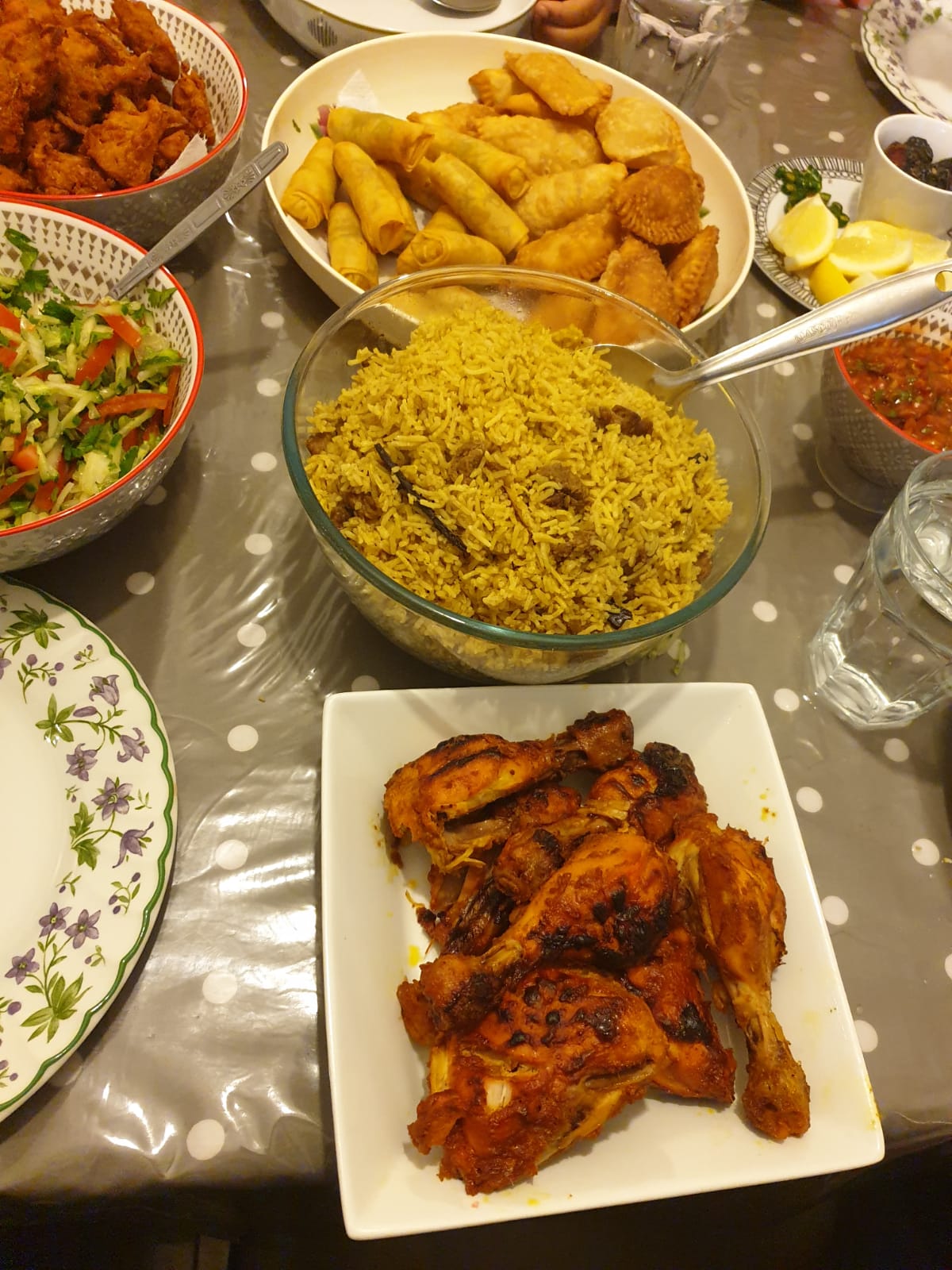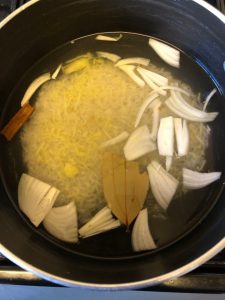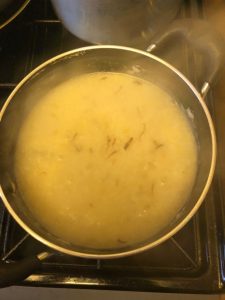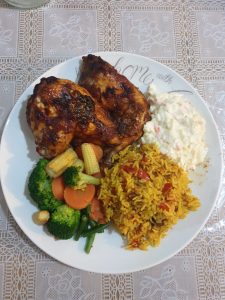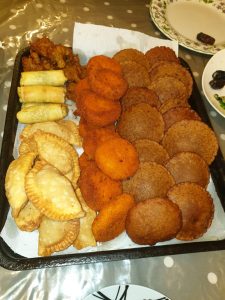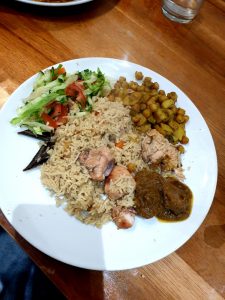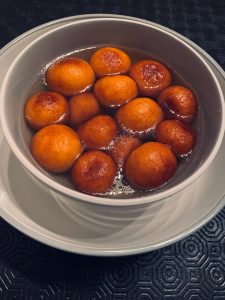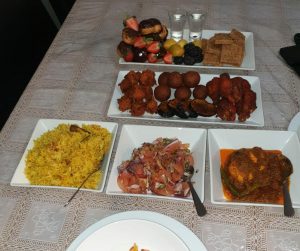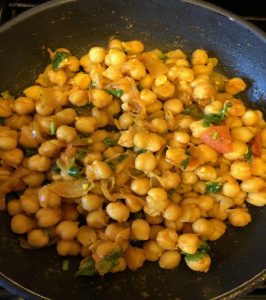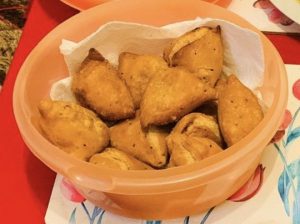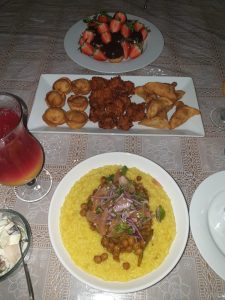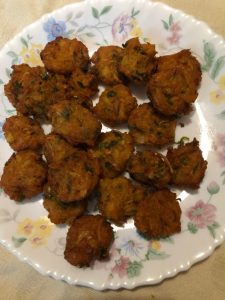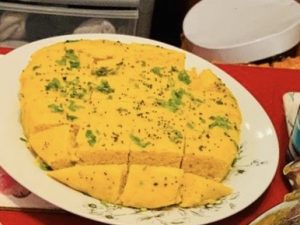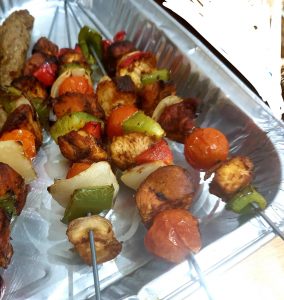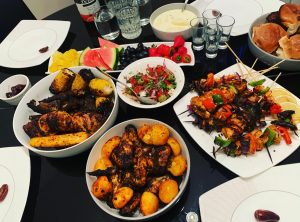During the COVID-19 lockdown, Muslim communities had to celebrate Ramadan at home. Building on our Food and Memory project, we created a Food and Memory activity in May 2020 during Ramadan that explored memories connected with particular dishes made for Iftar.
For the activity, we asked participants to share photos of the dishes they prepared over three days during Ramadan (plus a bonus day) and to reflect the different memories that the dishes evoked. We asked a different set of questions each and here are some of the responses.
Day 1: Why did you choose to make this dish today? How did you learn to make this dish? What memories do you have?
“Without this dish Ramadan is incomplete. Everyone in my family love eating this and it is something I grew up with. I learnt to make it from my mum. … This is a traditional Bangladeshi dish that’s eaten during Ramadan. I think you will find this dish in every Bangladeshi household. Ever since I was little I don’t remember a single day of fasting where we didn’t have this dish. This is one the first things that we break our fast with after eating a date. It’s not a spicy dish. It’s made out of basmati rice, fenugreek seeds, salt, ginger, onion, cinnamon and a bay leaf. Finally it’s garnished with fried onions in ghee”
– Participant
“I learnt this dish by looking at a few different recipes and combining them. Cooking the chicken was learnt from my mum after seeing her make roast or tandoori chicken at home. … This brings back memories of me being at university mainly and visiting Nandos very regularly. It is always requested when I invite anyone over – so it reminds me of lots of dinner parties”
– Participant
Day 2: Do you remember eating this dish in Bangladesh? When would you eat it and who with? Can you share your memories?
“I remember eating handesh in Bangladesh quite regularly. It’s a favourite with everybody. I suppose it’s the Bangladesh doughnut. … My fondest memory about handesh is my hufur making them, so that’s my dad’s sister. Literally she would not let anybody touch it, she would make it scratch, so from grinding the rice, to making the mixture to frying it, she literally wouldn’t let anyone do anything and her handeshs were the nicest”
– Participant
“I remember eating a lot of this during my last visit in Bangladesh where I was invited as a guest to many relatives houses and also had during Eid ul Adha when meat was plentiful due to the Qurbani of cows and goat. … I do recall not enjoying the Akhni in the Bangladesh villages much as I found that the villagers in Bangladesh generally ate food that were hot and spicier compared to the spice level my child and I were used to.
However, I remember having positive experiences in the City in Bangladesh – at a restaurant and at a hotel. On both occasions, we enjoyed the Biryani very much as they were catered for the tourists and cooked according to our spice preference. This blended together with the fresh spices, ghee and meat made the Biryani flavoursome, the taste which I still remember”
– Participant
“I’ve been inspired to make this today as I wanted something sweet and try making something that I haven’t tried before. This also does bring back a lot of memories when I was in Bangladesh I remember eating these nice and hot straight out fresh on the streets of Bangladesh. The specific memory I have about this is when my mama bought some for me nice and hot and he offered it me But my instant reaction at the time was I don’t want it because I didn’t really like Jillebis at the time but he insisted that I try it so I tried it to please him but when I had it to my surprise I absolutely loved it!”
– Participant
“Pilau, egg curry, lentil fritters and fried aubergine are all dishes I’ve eaten in Bangladesh. Every evening my uncle would come back from the bazaar with fresh hot lentil fritters, garnished with raw onion and green chillies. They used to be wrapped in newspaper and we used to love eating them with tea”
– Participant
“I remember when I was little, before Ramadan, we used to stock up our cupboards with dried chickpeas, lentils, rice flour and dates. I think this was the same in every Bangladeshi household. I remember seeing people buy these in the shops. … I don’t know if this dish is eaten in Bangladesh as often in Ramadan as I have never really been to Bangladesh during Ramadan”
– Participant
“These are mincemeat samsosas. … When I was young my mum always had to make [samosa pastry] from scratch, there was no buying from the shop the actual pastry. … I’ve heard stories from my mum [from Bangladesh], because obviously I’ve lived more of my life here, she used to say they used to [grind the rice] by hand. It was like a pestle and mortar, these big ones where they used to use it with their hands and crush the rice [into flour]”
– Participant
Day 3: Can you remember eating this as a child? What can you remember? Is this a recipe you will pass on to your children? Why/why not?
“I remember kisuri and chana being the starter of every iftar when I was young and I absolutely hated everything about it – however now I absolutely love it because it is comforting and I feel like it warms my insides.
One of the clearest memories I have is when I made chana for the first time – I made it for my grandma. My grandma was very traditional and was a strong believer in cooking with less ingredients but enhancing their flavour by using different cooking methods to maximise the taste of the dish.That day I added tomatoes to the chana – which maybe common now but it is not the traditional recipe for chana.
– Participant
She had one bite and gave me the dirtiest look over- she was soo disgusted and did not eat it. Until today I never put tomatoes in my chana 😆
This recipe and story I will definitely pass onto my children because I feel kisuri and chana are Bengali staples for iftar, I also feel it is really important for our children to know where these dishes came from so they can cook with love and have a connection with the food, rather than just follow a YouTube video”
“This is one of my favourite dishes and probably one that I make quite often out of Ramadan time to eat as a snack or if I have guests. It’s a traditional Bangladeshi snack that I’ve been eating ever since I was a child. … This dish reminds me of Bangladesh the most as it’s a traditional street food. I remember going out in the rickshaws in the evenings. Going through main roads in every town, the men would be making them in a massive pan outside their stalls. The smell of the fried Dhal Bora instantly attracts my attention”
– Participant
“Dhokra is an Indian dish more than a Bengali dish, I learned to eat that in the UK from an Indian shop, like in Leicester when I go shopping on Belgrave Road. … I remember when my dad used to take us to Leicester for Indian clothes shopping, my dad used to buy it there so that’s how it became my favourite. … I always pick dhokra up when I go to Leicester”
– Participant
Bonus day: How has Ramadan food changed from Bangladesh to the UK? What differences can you think of? Why do you think it has changed?
“Ramadhan food has changed considerably in a number of ways. Previously Bangladeshis mainly ate traditional Ramadhan food such as samsosas, pakoras, kisury and chana whilst although these are still included amongst the older generations in the UK, the younger generation prefer more western food or other cuisines including Chinese, Turkish, Italian and the fusion of these. The change is due to many reasons. The availability of food from different cultures in our Multicultural Britain is one of the reasons. The younger generations have expanded their tastes and food interests and want to have these instead”
– Participant
“Ramadan Food has changed from Bangladesh to the UK a lot because the generation has changed, times have changed and so have the people/children and their lifestyle. Our days and the way of life and culture before and the way we spent time with our parents will be different to the way our children spend their time nowadays. For example, before there was no technology and no social media and no mobile iPhones – I feel we spent more time with our parents and our mothers in the kitchen then kids nowadays. Nowadays I feel kids are too much into social media and putting different photos on Snapchat or Instagram to show off different types of food rather than following the usual culture and tradition.
Ramadan now is completely different and less traditional than it used to be when I was small because I feel the kids enjoy normal British food or different food to eat in iftaar time rather than the good old tradition food we used to eat before so they can show off to their friends”
– Participant

